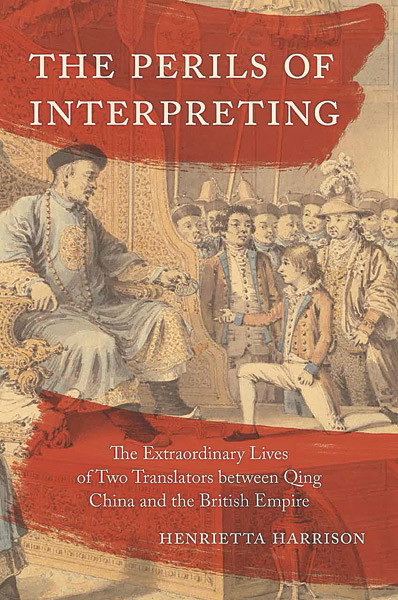

Scholar's latest book investigates the influence of the unique individuals acting as cultural mediators on the outcome of the Macartney Embassy, the first British diplomatic mission to China in the 1700s, Yang Yang reports.
In the early autumn of 2008, Henrietta Harrison, a scholar of Chinese history, was reading the Catholic missionary archives in a lovely rooftop garden in the Vatican. She was there to look for Latin materials about a Catholic village Dong'ergou in North China's Shanxi province.
Harrison, with an undergraduate degree in ancient Greek and Latin, wanted to shed a brighter light on the Latin materials-which are not easily accessible to most Chinese historians-and their place in Chinese history, she says in an email to China Daily.
While she was reading the letters of missionaries from more than 300 years ago, she came across correspondence from a Chinese man that aroused great interest in her. In the letters, the Chinese man talks about his work as the interpreter with the first British diplomatic mission to China, led by the envoy George Macartney, in 1793.
What particularly interested her was that this was a Chinese man who spent 20 years in Europe in the 18th century. He appeared unusual because his correspondence, including that which describes his travels across Europe in the middle of the Napoleonic wars as a Chinese, has survived. His Chinese name was Li Zibiao.
When examining pivotal historical moments, people tend to focus on major decision-making figures, but often overlook minor players that could exert unexpected influence and provide new perspectives for people to understand the historical context of such moments.
However, Harrison, now a professor of modern Chinese studies at the University of Oxford in the United Kingdom, has always been interested in the lives of ordinary people in China, from those who lived during the Qing Dynasty (1644-1911) until today. With great effort, she has spent years collecting details from around the world, so that she could tell their stories in her scholarly works.
"Mostly I do research because I love finding and telling stories. History is really a creative art," she says.
She did so in works such as The Man Awakened From Dreams and The Missionary's Curse and Other Tales From a Chinese Catholic Village.
In the case of Li, he was one of two interpreters (the other was 12-year-old George Thomas Staunton) and one of four people sent from Europe to witness that historic diplomatic moment between the East and the West. Of course, the life of this relatively obscure fellow was fascinating to Harrison.
She included Staunton in her research because, when she told people about her study on the translators with the Macartney Embassy, people kept asking, "What about George Staunton?" He turned out to be more interesting than she initially expected, she said in an online lecture with California State University earlier this year.
Since 2008, Harrison had spent about 10 years working on the study of the two interpreters and the book, The Perils of Interpreting: The Extraordinary Lives of Two Translators Between Qing China and the British Empire, was published by Princeton University Press last year. Basically, it is a dual biography of Li and Staunton.